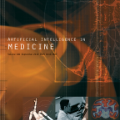With a rising attention for the issue of PM2.5 or PM0.3, particulate matters have become not only a potential threat to both the environment and human, but also a harming existence to instruments onboard International Space Station (ISS). Our team is aiming to relate various concentration of particulate matters to magnetic fields, humidity, acceleration, temperature, pressure and CO2 concentration. Our goal is to establish an early warning system (EWS), which is able to forecast the levels of particulate matters and provides ample reaction time for astronauts to protect their instruments in some experiments or increase the accuracy of the measurements; In addition, the constructed model can be further developed into a prototype of a remote-sensing smoke alarm for applications related to fires. In this article, we will implement the Bi-GRU (Bidirectional Gated Recurrent Unit) algorithms that collect data for past 90 minutes and predict the levels of particulates which over 2.5 micrometer per 0.1 liter for the next 1 minute, which is classified as an early warning
翻译:随着对PP2.5或PP0.3或PP2.5或PP0.3问题的日益关注,微粒物质不仅成为对环境和人类的潜在威胁,而且对国际空间站(ISIS)上的仪器造成伤害。我们的小组的目标是将微粒物质的各种浓度与磁场、湿度、加速度、温度、压力和二氧化碳浓度联系起来。我们的目标是建立一个预警系统(EWS),该系统能够预测微粒物质的含量,并为宇航员在某些实验中保护其仪器或提高测量精确度提供充足的反应时间;此外,所建模型可以进一步开发成一个遥感烟雾警报的原型,用于与火灾有关的应用。在本篇文章中,我们将采用双GRU(双向Gated 常规单位)的算法,收集过去90分钟的数据,并预测未来1分钟的微粒子含量,每0.1升2.5以上,这被归类为预警。





